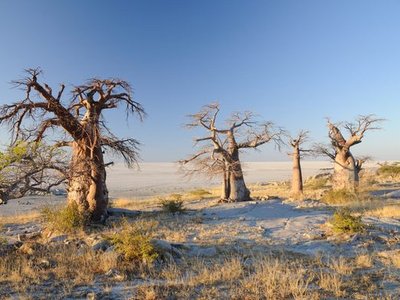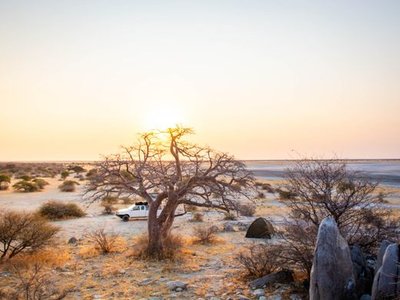Kubu Island


Rising like the grey-colored humps
of hippo wallowing in muddy water, Kubu Island is a fitting name for the mounds of rock that lie almost smack bang in the middle of
Botswana
’s
Makgadikgadi Salt Pans
. The name
Kubu
means either “large rock” in the Kalanga language or Hippo in Tswana. The local lingo for this popular off-roading destination alludes to the watery history of long gone times.Geologically speaking, these sprawling salt flats bear proof that this was once a prehistoric lake. The water that now feeds the Victoria Falls and the Okavango Delta, used to spill over here all the way from Angola in the north. But tectonic activity shifted the waters away leaving today’s travelers with desert and shallow mud in rain season.
Although the rocky outcrop is just 30 feet high, the summit of Kubu Island is enough to offer panoramic views across the vast plains surrounding it. Turn in a 360-degree circle and you cannot see any other civilization, only an infinite white horizon. This total lack of human habitation also makes this great white space a top location for uninterrupted stargazing. Look closely at some of the seemingly whitewashed rocks. Experts say this is actually fossilized guano from waterbirds that once perched along the edge of the Great Makgadigadi Lake. Also, archeological recovery has revealed the presence of prehistoric humans through abundant finds of stone tools. Some believe the island was an initiation centre for male Gain-O indegeneous people.Wildlife is abundant but limited to smaller mammals, birds and reptiles.